#44 Gediminas-Turm, Tor der Morgenröte und PORTAL / Gediminas Tower, Gate of Dawn and PORTAL
Laut der japanischen Botschaft in Paris erkranken jedes Jahr 20 bis 24 Personen schwerwiegend am Paris-Syndrom. Meist sind Japaner*innen von der vorübergehenden psychischen Störung betroffen, zu deren Symtomen etwa Halluzinationen, Wahnvorstellungen, Angst, Herzrasen, Schweißausbrüche und Schwindel zählen. Die Ursache wird in den enttäuschten Erwartungen der Tourist*innen an die Stadt der Liebe gesehen.
Bei einem Städtetrip nach Vilnius könnte ein gegenteiliges Phänomen auftreten. Vilnius ist nicht Rom, London oder Paris, ganz klar. Vilnius ist so wenig beliebt, dass kaum mehr als ein roter Hop-on-hop-off-Bus an den Tourismus in der Stadt erinnert. Vor meinem Aufenthalt wurde ich von meiner Professorin gefragt, ob Vilnius in Lettland liege. Pietro Lombardi ist in Deutschland vermutlich bekannter als Vilnius. Aber: Genau deswegen könnte ein Besuch in Vilnius im Vergleich zu einem Besuch in Paris von mehr Freude, guter Laune und Bewusstseinsklarheit geprägt sein, nicht weil Vilnius schöner ist, sondern weil die Stadt Erwartungen übertrifft.
Eine Freundin, die mich Ende April in Vilnius besuchte und deren Erwartungen übertroffen wurden, schrieb diesen kurzen Text für meinen Blog:
Vilnius war viel schöner, als ich es erwartet habe – trotz allem, was ich bisher von den baltischen Staaten gehört habe. Ich habe heruntergekommene Gebäude, dreckige Straßen und Menschen, die kein Englisch sprechen, erwartet, obwohl einige Freunde und Bekannte mir erzählt haben, wie fortschrittlich und modern das Leben in den baltischen Staaten ist. Tatsächlich war das Straßenbild sehr sauber, die Menschen unglaublich rücksichtsvoll und die Verständigung war überhaupt kein Problem. Es gibt einige heruntergekommene Gebäude, aber die Umgebung ist gepflegt. Und teilweise habe ich mich wie in einer Modellstadt gefühlt – überall gab es wie selbstverständlich von den Gehwegen abgetrennte Fahrradwege und die Gebäude waren sehr modern. Es gibt viele Parks in der Stadt und in einem, der direkt an der Neris liegt [Vingis Park], spazierte ich besonders gerne. Die Natur hat einen von Menschen unberührten Eindruck gemacht, man hätte meinen können, die Wälder lägen keine zehn Gehminuten entfernt von dem städtischen Leben. Ich fand es sehr schade, dass ich Litauen nach dreieinhalb Tagen verlassen habe – ich wäre gerne noch weiter nach Riga und Tallinn gefahren, aber jetzt weiß ich, dass ich die beiden Städte unbedingt besuchen und mehr über die baltischen Staaten erfahren möchte.
Zur Verständigung muss ich anmerken: Manchmal – gerade mit älteren Litauer*innen – ist sie für mich kein reines Zuckerschlecken. In Litauen lernen Schüler*innen erst seit 1990 Englisch statt Russisch als erste Fremdsprache in der Schule. Mit Google-Übersetzer fragte mich eine Apothekerin einmal, ob mein Auge „verrottet“ sei, um herauszufinden, welche Augentropfen ich benötigte. Auf Speisekarten oder Museums-Webseiten finden sich häufig sowohl englische als auch russische Übersetzungen. Im Restaurant Etno dvaras, das die Anlaufstelle für nicht allzu teure, litauische Küche ist, fand ich neulich jedoch statt einer russischen Übersetzung die ukrainische vor.
/
According to the Japanese Embassy in Paris, 20 to 24 people become seriously ill with Paris syndrome every year. Mostly Japanese people are affected by the temporary mental disorder, whose symptoms include hallucinations, delusions, anxiety, heart palpitations, sweating and dizziness. The cause is seen in the tourists‘ disappointed expectations of the city of love.
On a city trip to Vilnius, the opposite phenomenon could occur. Vilnius is not Rome, London or Paris, that’s for sure. Vilnius is so unpopular that little more than a red hop-on-hop-off bus is a reminder of tourism in the city. Before my stay, I was asked by my professor if Vilnius was in Latvia. Pietro Lombardi is probably better known in Germany than Vilnius. But: precisely because of this, a visit to Vilnius could be marked by more joy, good humour and clarity of consciousness compared to a visit to Paris, not because Vilnius is more beautiful, but because the city exceeds expectations.
A friend who visited me in Vilnius at the end of April and whose expectations were exceeded wrote this short text for my blog:
Vilnius was much nicer than I expected – despite everything I have heard about the Baltic States so far. I expected run-down buildings, dirty streets and people who don’t speak English, even though some friends and acquaintances have told me how progressive and modern life is in the Baltic States. In fact, the streetscape was very clean, people were incredibly considerate and communication was no problem at all. There are some run-down buildings, but the surroundings are well-kept. And in parts I felt like I was in a model city – everywhere there were bike lanes separated from the pavements as a matter of course and the buildings were very modern. There are many parks in the city and I particularly enjoyed walking in one that is right next to the Neris [Vingis Park]. The nature made an impression untouched by people, you would have thought the forests were not ten minutes‘ walk away from the city life. I thought it was a pity to leave Lithuania after three and a half days – I would have liked to go further to Riga and Tallinn, but now I know that I definitely want to visit the two cities and learn more about the Baltic States.
I have to say something about communication: Sometimes – especially with older Lithuanians – it is not a piece of cake for me. In Lithuania, pupils have only been learning English instead of Russian as their first foreign language at school since 1990. Using Google translator, a pharmacist once asked me if my eye was „rotten“ to find out what eye drops I needed. On menus or museum websites, there are often both English and Russian translations. However, in the restaurant Etno dvaras, which is the place to go for not too expensive Lithuanian cuisine, I recently found the Ukrainian translation instead of a Russian one.

Meine Freundin stellte mir ihre Fotos zur Verfügung, die sie mit ihrer Spiegelreflex machte. Dank meiner Besucher*innen sah ich Dinge, die mir ohne sie verborgen geblieben wären. Ich bin zum Leben hierher gekommen, nicht als Tourist. Mir fiel beispielsweise nicht auf, dass in den Hüten, die über der Stiklių Straße hängen, Wörter wie „Freiheit“, „Familie“ und „Glück“ in Hebräisch und anderen Sprachen stehen. Die Straße gehörte früher zum mittelalterlichen jüdischen Stadtviertel und im Zweiten Weltkrieg zum Kleinen Ghetto.
/
My friend shared her photos with me, which she took with her SLR. Thanks to my visitors, I saw things that would have remained hidden to me without them. I came here to live, not as a tourist. I didn’t notice, for example, that the hats hanging over Stiklių Street have words like „freedom“, „family“ and „happiness“ written in Hebrew and other languages. The street used to belong to the medieval Jewish quarter and to the Little Ghetto during the Second World War.
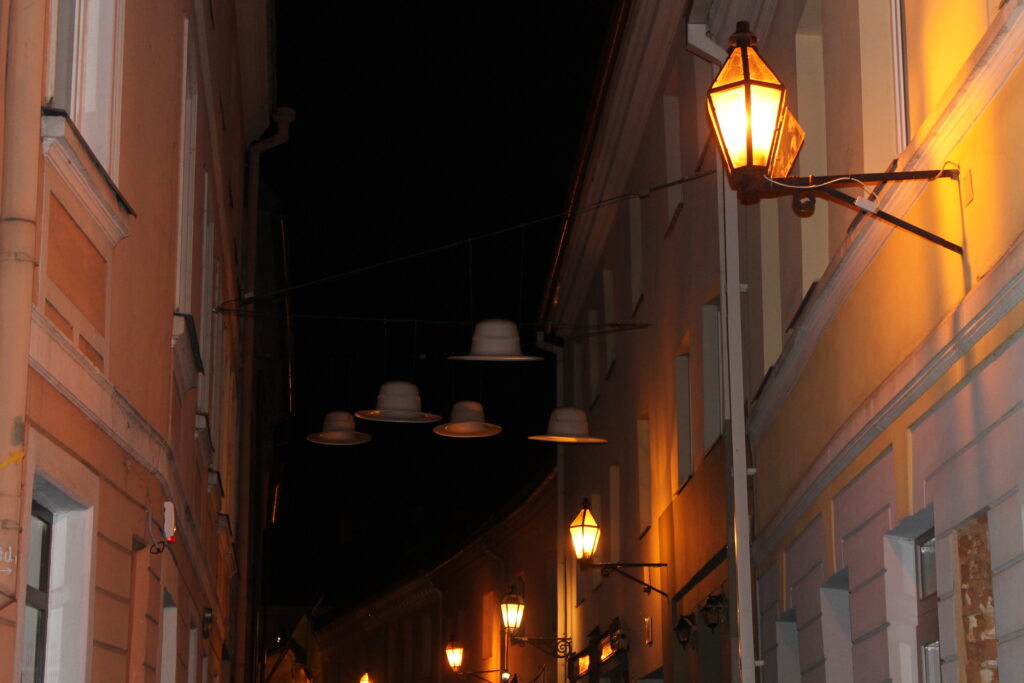
Mit Besucher*innen stieg ich Mitte April zum ersten Mal auf den Gediminas-Turm, ein Wahrzeichen, das ich zu Beginn für so kennzeichnend für Vilnius hielt wie den Eiffelturm für Paris. Bei dem Spiel „Wer bin ich“ ließ ich eine Person aus dem Wohnheim allerdings einmal den Gediminas-Turm sein und sie erriet es nicht … Ein Fahrstuhl brachte uns jedenfalls auf den Hügel, dessen Hänge abrutschgefährdet sind und regelmäßigen Aufschüttungsmaßnahmen bedürfen.
/
In mid-April, I climbed the Gediminas‘ Tower with visitors for the first time, a landmark that I initially thought was as characteristic of Vilnius as the Eiffel Tower is of Paris. However, in the game „Who am I“, I let a person from the dormitory be the Gediminas Tower once and she didn’t guess it … In any case, a lift took us up the hill, whose slopes are prone to slipping and require regular backfilling.

Die Legende, die den Hügel umwebt, konnte ich in dem Museum, das der Gediminas-Turm beherbergt, nachlesen: Gediminas, ab 1316 Großfürst von Litauen, träumte nach einem Jagdausflug von einem eisernen Wolf, der auf dem Hügel, auf dem Gediminas einen Bison erlegt hatte, lauthals heulte. Als Gediminas erwachte, suchte er einen Priester auf, der den Traum deutete: Gediminas solle eine Stadt inmitten dieser Hügel gründen, deren Ruf sich verbreiten würde wie das Heulen des Wolfes. Der Großfürst folgte dieser Anweisung, errichtete auf dem Hügel eine Festung und begann mit dem Bau der künftigen Hauptstadt, die den Namen Vilnius erhielt, benannt nach dem Fluss Vilnia (auch Vilnelė).
In einem Raum des Museums sind vor die Turmfenster Leinwände gespannt. Wir blickten quasi aus den Fenstern den Hang hinunter auf Angriffe des Deutschen Ordens, Brände, Verwüstung, Wiederaufbau und den Wandel der Stadt, die 1323 erstmals als Hauptstadt der Litauer*innen erwähnt und mit der 1579 gegründeten Universität Vilnius eine der ältesten Universitätsstädte Europas wurde.
Geschichtlich am meisten beeindruckt hat mich in dem Museum jedoch die Darstellung des Baltischen Wegs, die Menschenkette 1989 von Vilnius bis Tallinn – die längste bekannte Menschenkette der Geschichte. Ich bin schon eine ganze Nacht, neun Stunden, von Vilnius bis in die estnische Hauptstadt über die Autobahn gefahren. Über eine Entfernung von 650 Kilometern hielten sich über eine Million Menschen in Litauen, Lettland und Estland am 23. August 1989 – 50 Jahre nach der Unterzeichnung des Hitler-Stalin-Pakts – an der Hand und demonstrierten für die Unabhängigkeit ihrer Länder.
/
I was able to read the legend surrounding the hill in the museum that the Gediminas‘ Tower houses: Gediminas, Grand Duke of Lithuania from 1316, dreamt after a hunting trip of an iron wolf howling loudly on the hill where Gediminas had killed a bison. When Gediminas woke up, he consulted a priest who interpreted the dream: Gediminas was to found a city in the middle of these hills, whose reputation would spread like the howling of the wolf. The Grand Duke followed this instruction, built a fortress on the hill and began building the future capital, which was named Vilnius, after the river Vilnia (also Vilnelė).
In one room of the museum, screens are stretched in front of the tower windows. We looked out of the windows down the slope at attacks by the Teutonic Order, fires, devastation, reconstruction and the transformation of the city, which was first mentioned as the capital of the Lithuanians in 1323 and became one of the oldest university cities in Europe with Vilnius University founded in 1579.
Historically, however, what impressed me most in the museum was the display of the Baltic Way, the 1989 human chain from Vilnius to Tallinn – the longest known human chain in history. I have already driven a whole night, nine hours, from Vilnius to the Estonian capital via the motorway. Over a distance of 650 kilometres, more than a million people in Lithuania, Latvia and Estonia held hands on 23 August 1989 – 50 years after the signing of the Hitler-Stalin Pact – and demonstrated for the independence of their countries.

Mein Besuch wollte unbedingt nach Kaunas, in die Europäische Kulturhauptstadt 2022. Wieder habe ich dort die Straßen der Altstadt als Baustelle erlebt, immerhin konnten wir inzwischen auf geebneten Gehwegen laufen. Am Kloster klingelten wir – um 16:30 Uhr sollte es noch eine halbe Stunde geöffnet sein, aber niemand öffnete uns. In der Stadtbibliothek, die aus einem einzigen, großen Raum besteht, fanden wir nur noch in der Kinderecke einen freien Platz zum Lesen.
Kaunas‘ Highlight war diesmal das Anatomiemuseum, das in der Medizinischen Fakultät zu finden ist. Man kann einfach hineinspazieren, ohne Eintritt zu zahlen. Wir waren die einzigen Besucher*innen. Auch dieses Museum ist in einem einzigen, großen Raum untergebracht, wenn auch einem größeren als die Stadtbibliothek. Jedes Organ wird ausgestellt vom Gehirn über Lunge und Darm bis zur Gebärmutter. Ich kam mir vor wie im Keller der ersten Staffel von American Horror Story: Kleinwüchsige Skelette, eingelegte, syamesische Zwillingsembryos und krebsbefallene Eierstöcke.
/
My visitors really wanted to go to Kaunas, the European Capital of Culture 2022. Again, I experienced the streets of the old town as a construction site, but at least we could walk on paved pavements in the meantime. We rang the bell at the monastery – it was supposed to be open for another half hour at 4:30 pm, but no one opened. In the city library, which consists of a single, large room, we only found a free place to read in the children’s corner.
Kaunas‘ highlight this time was the Anatomy Museum, which can be found in the Medical Faculty. You can just walk in without paying an entrance fee. We were the only visitors. This museum is also in one big room, albeit a bigger one than the city library. Every organ is on display from the brain to the lungs and intestines to the uterus. I felt like I was in the basement of the first season of American Horror Story: skeletons of small stature, pickled Siamese twin embryos and cancerous ovaries.
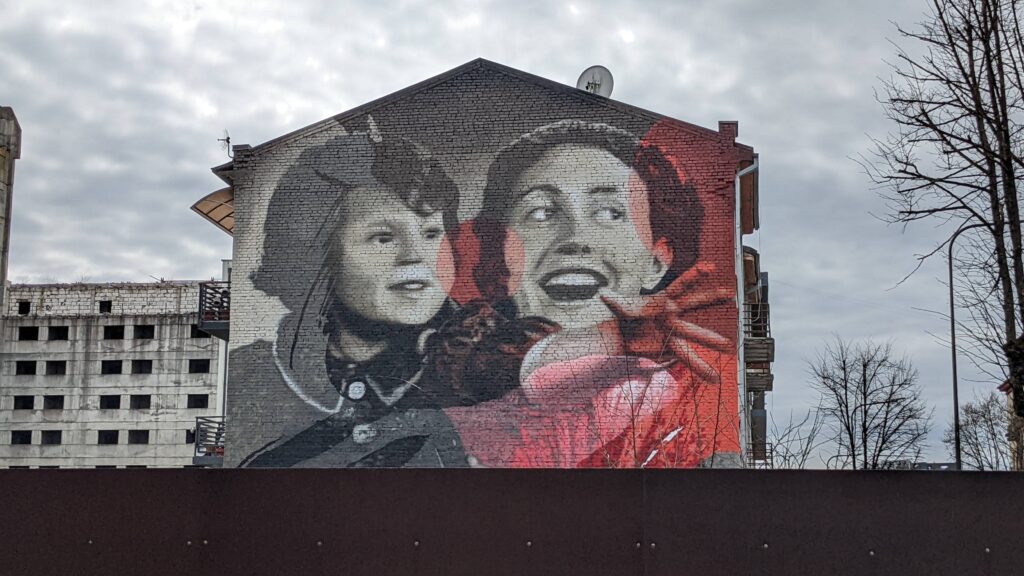
Zurück in Vilnius, wurden mir das Tor der Morgenröte – das einzig übriggebliebene Tor der Stadtmauer – sowie weitere schöne Tore und Kirchen in der Morgentorstraße zuteil. Das Tor der Morgenröte enthält ein bekanntes Renaissance-Gemälde der Jungfrau Maria, das von außen durch das Fenster der Kapelle des Tores zu sehen ist.
/
Back in Vilnius, I was treated to the Gate of Dawn – the only remaining gate of the city wall – as well as other beautiful gates and churches on Gate of Dawn Street. The Gate of Dawn contains a famous Renaissance painting of the Virgin Mary, which can be seen from the outside through the window of the gate’s chapel.
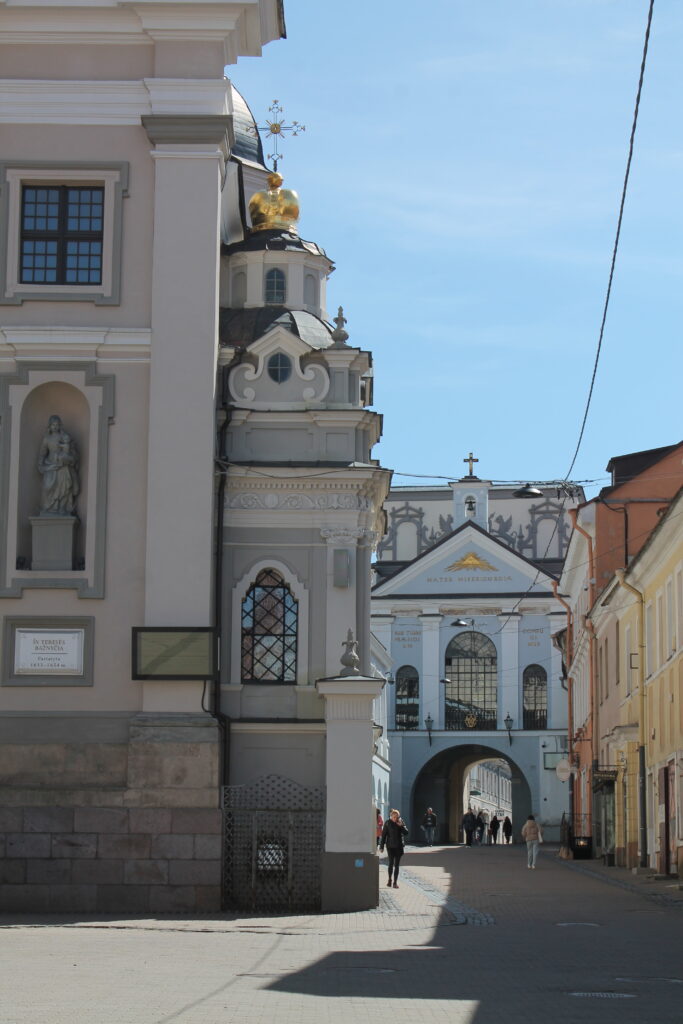
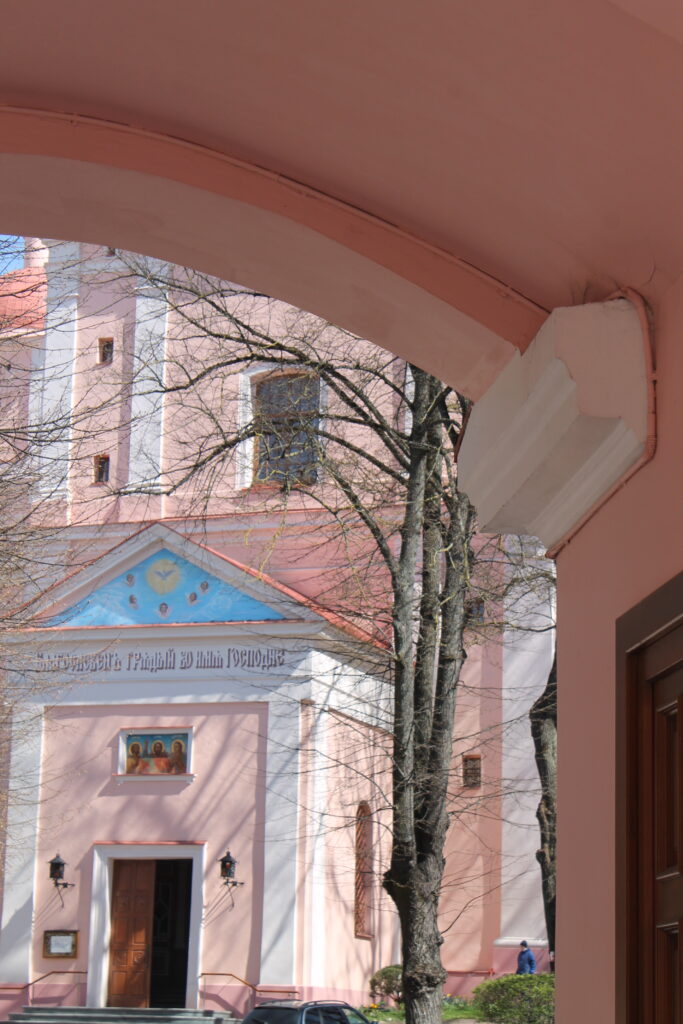
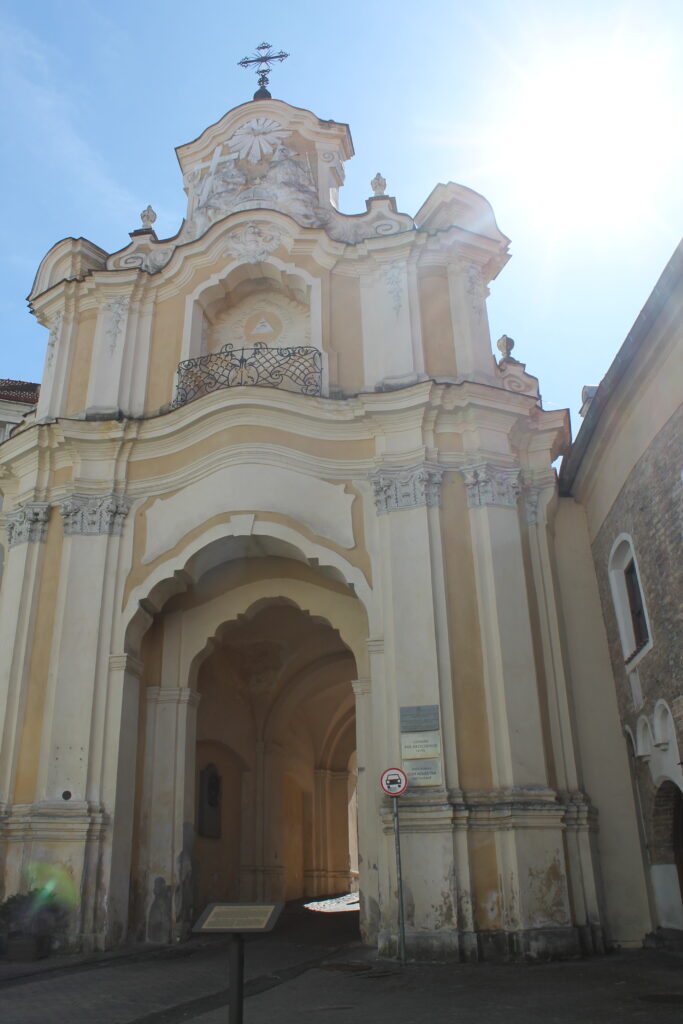
In der Markthalle zwischen dem Tor der Morgenröte und dem Bahnhof kann ich seit neuem den Saft mit Karotte, Rote Beete und Apfel empfehlen. Was ein Saftladen! Außerdem habe ich Grill London, das beste Burger-Restaurant der Stadt, entdeckt. Zwischen Markthalle und Bahnhof stieß ich endlich auf das Streetart-Gemälde, das ich zuvor nur auf Bildern gesehen hatte. Lange hatte ich mich gefragt, wo das zugehörige Haus eigentlich steht und es liegt direkt am Vijokliai Biergarten, den ich nie besuchte.
/
In the market hall between the Gate of Dawn and the train station, I can now recommend the juice with carrot, beetroot and apple. What a juice shop! I also discovered Grill London, the best burger restaurant in town. Between the market hall and the train station, I finally came across the street art painting that I had only seen in pictures before. For a long time I had wondered where the associated house actually was, and it’s right next to the Vijokliai beer garden, which I never visited.
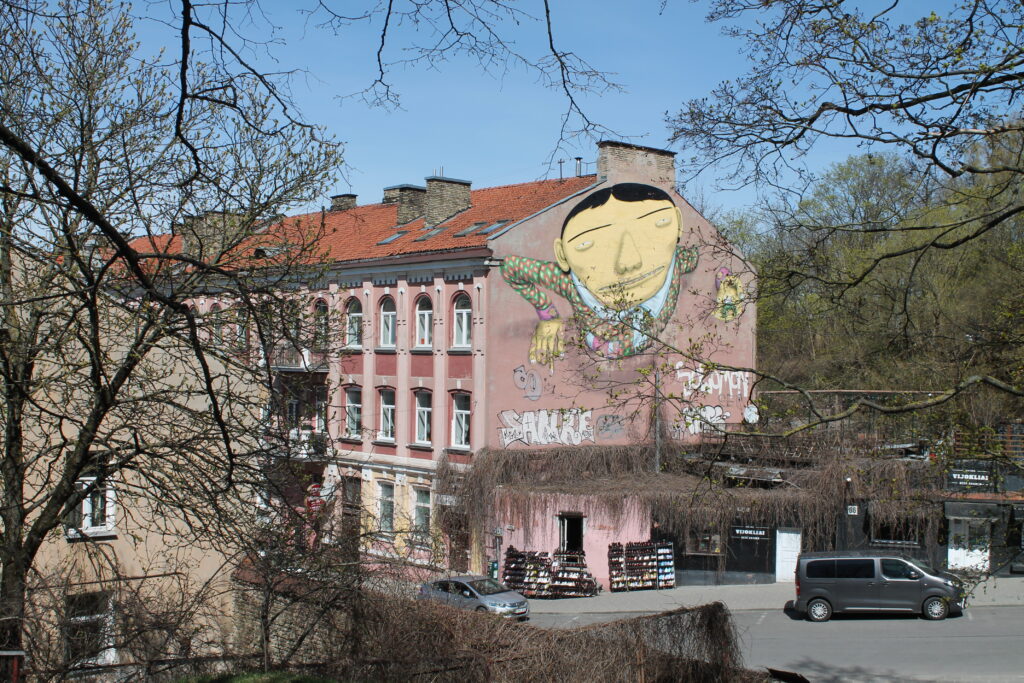
Mit dem Begriff „Portal“ verbinde ich nicht nur ein anstrengendes Computerspiel für Paare, die eine Fernbeziehung führen (da mag ich „Puzzle Together“ lieber). Das PORTAL steht vor dem Bahnhof und verbindet Vilnius mit Lublin, einer Stadt in Polen. Immer, wenn ich davor stehe, winke ich, und oft winken die Silhouetten zurück, die über den Platz laufen, den ich durch das Portal sehe. In naher Zukunft soll die Welt durch Dutzende von PORTALS in ganz Europa und auf der ganzen Welt weiter vernetzt werden. Das Projekt zielt darauf ab, eine öffentliche Bewegung zu fördern, die sich auf soziale Experimente, unerwartete Reaktionen und die Vereinigung verschiedener Kulturen und ihrer Menschen einlässt.
/
I don’t just associate the term „portal“ with an exhausting computer game for couples in a long-distance relationship (I like „Puzzle Together“ more). The PORTAL stands in front of the train station and connects Vilnius with Lublin, a city in Poland. Whenever I stand in front of it, I wave, and often silhouettes wave back, walking across the square I see through the portal. In the near future, the world will be further connected through dozens of PORTALS across Europe and around the world. The project aims to foster a public movement that engages in social experimentation, unexpected responses and the unification of different cultures and their people.
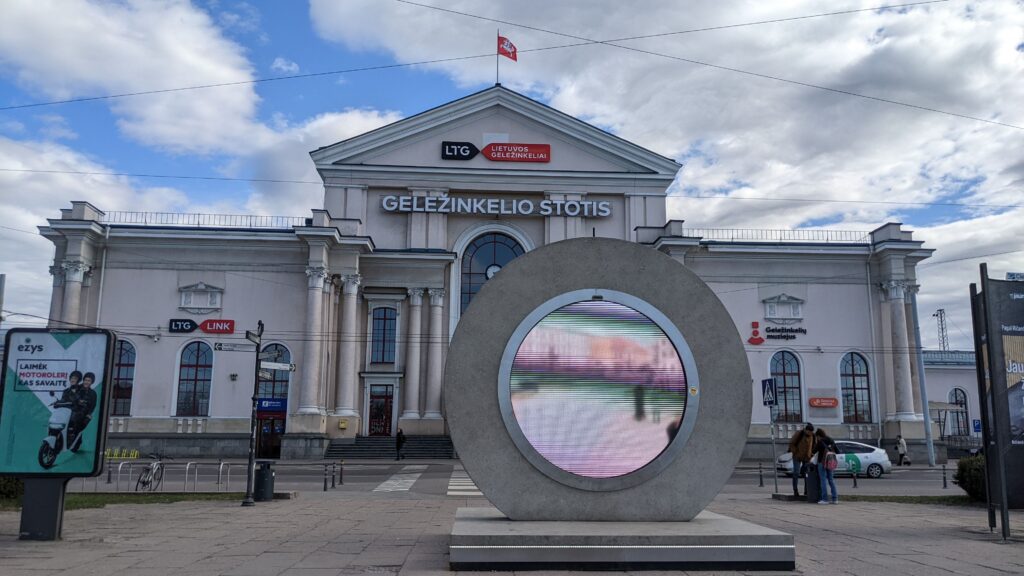
Der Zug nach Trakai braucht nur dreißig Minuten. Vom Bahnhof aus ist man schneller dort als an den Green Lakes. In Trakai schaukelten wir auf den größten Baumschaukeln, die ich je gesehen habe, so hoch, dass es im Bauch kribbelte. Wir sahen ein Blesshuhn, das zuerst wie ein Delfin in die Luft sprang, bevor es untertauchte, und tranken im Schokoladenmuseum eine leckere heiße Schokolade. Auf dem Steg zur Burg lag ein Kätzchen.
/
The train to Trakai takes only thirty minutes. It’s quicker to get there from the station than to the Green Lakes. In Trakai we swung on the biggest tree swings I have ever seen, so high that it made my stomach tingle. We saw a coot that first jumped into the air like a dolphin before diving under, and drank some delicious hot chocolate in the chocolate museum. There was a kitten on the footbridge to the castle.
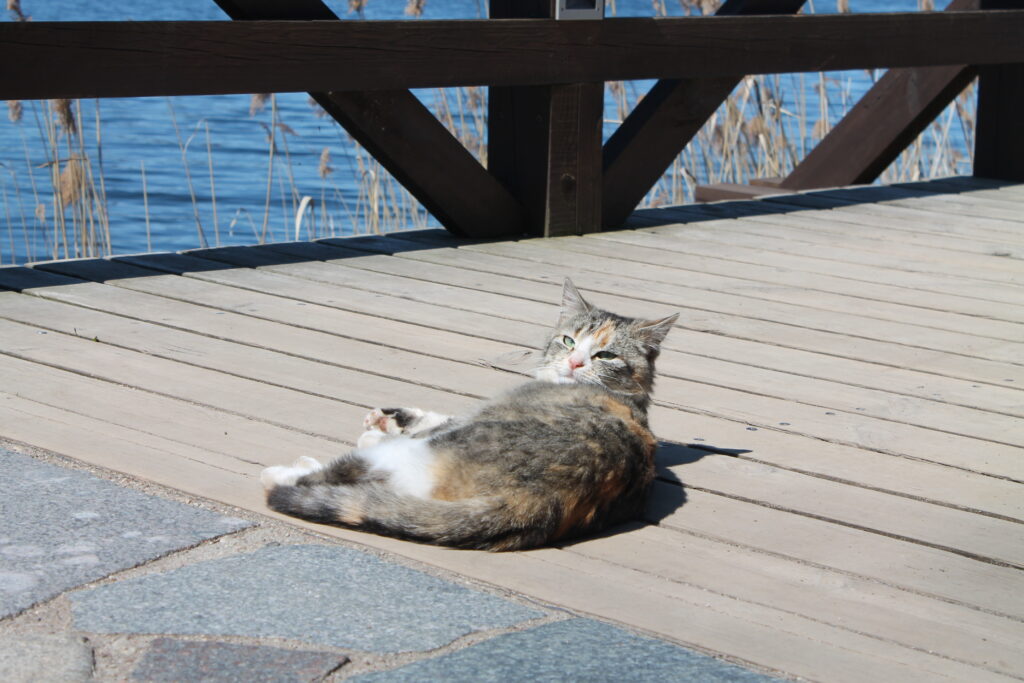
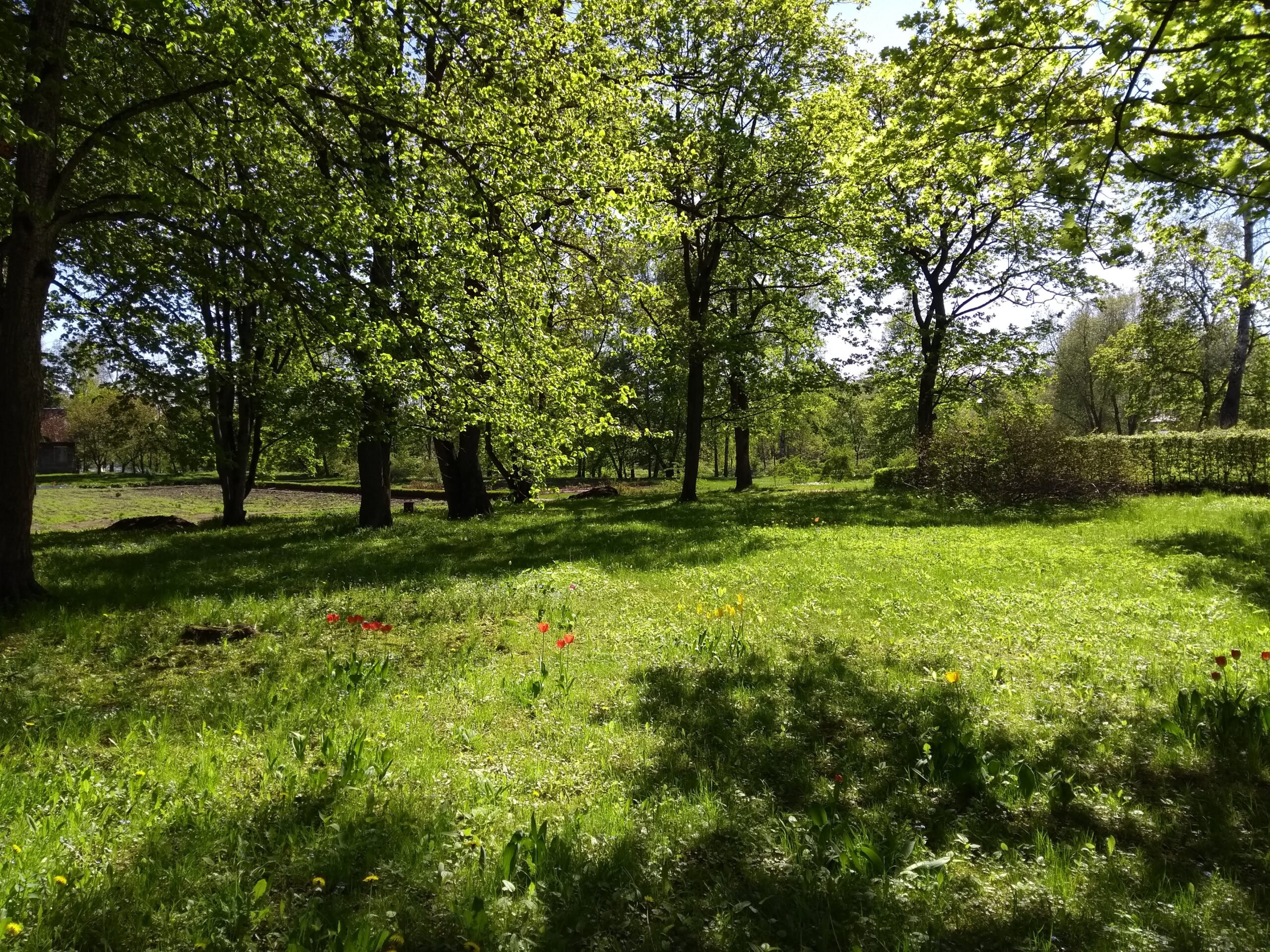
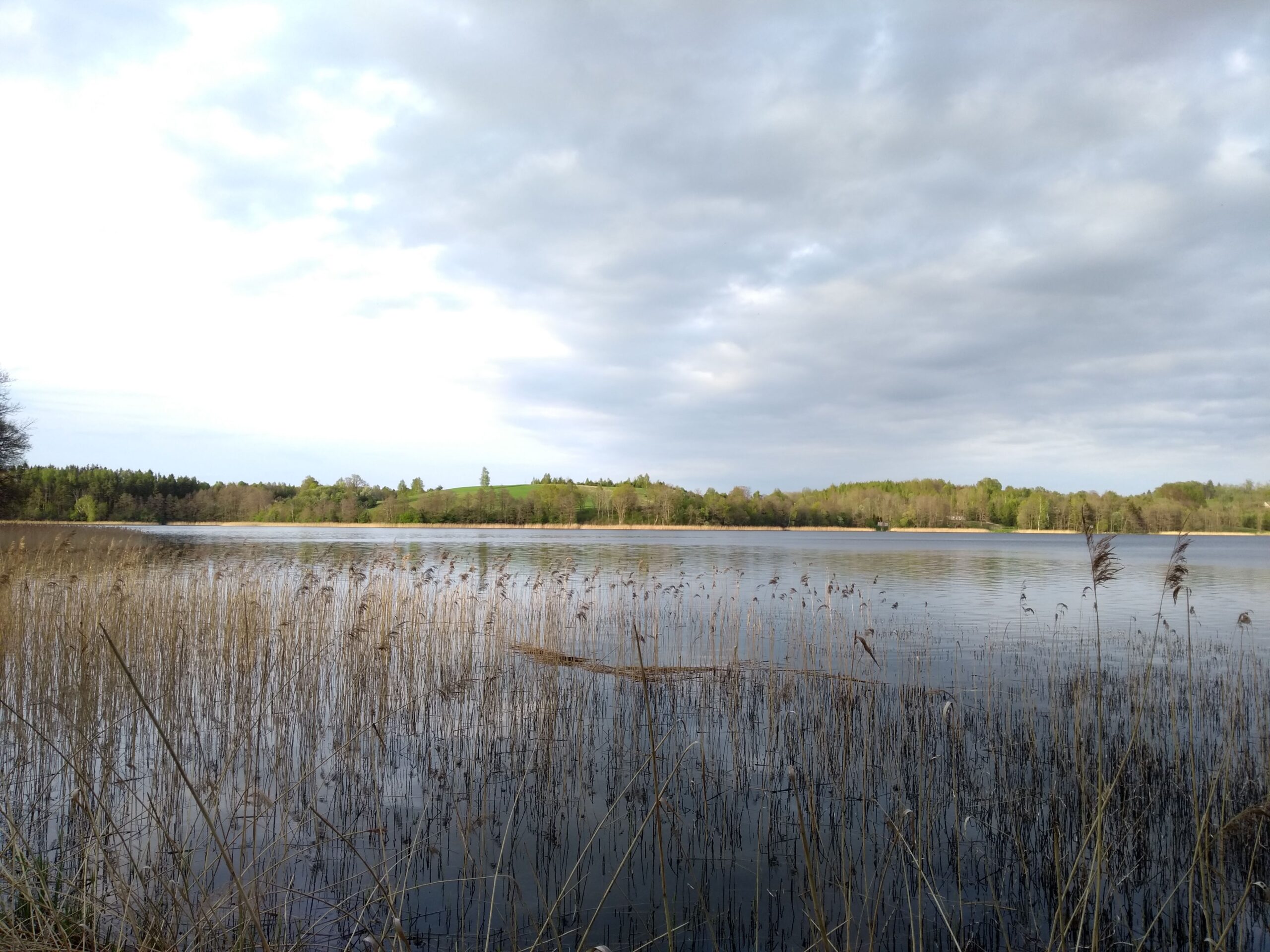
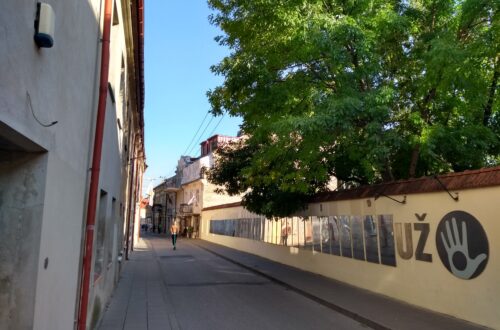
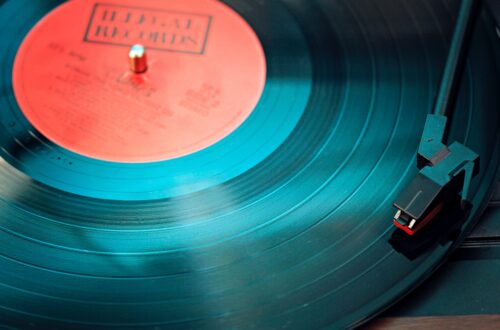
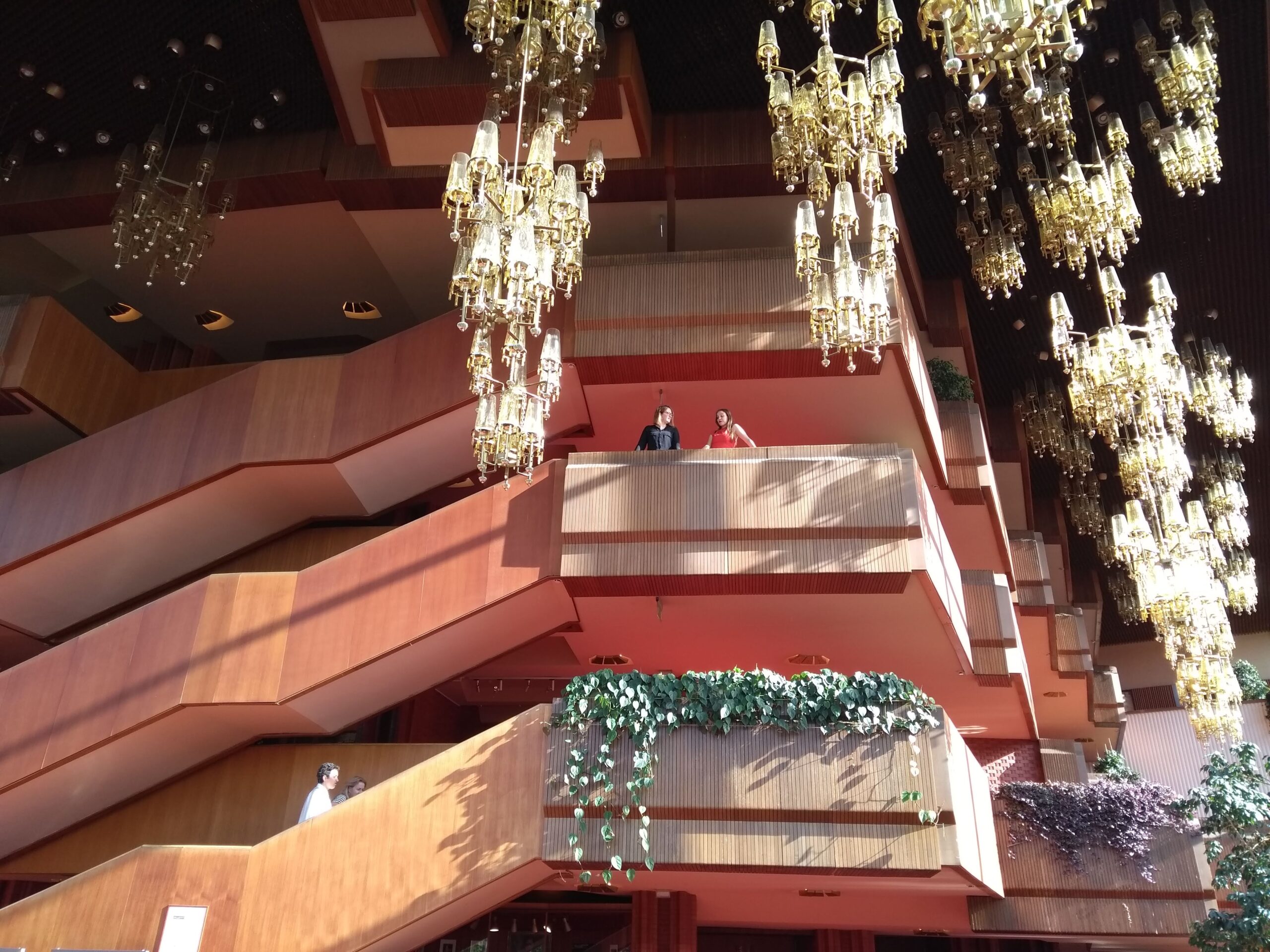
2 Kommentare
Norbert
Einfach herrlich erzählt. Die Inschriften auf den Hüten sind mir auch aufgefallen. Gerne weiter so, danke
P S
Mir gefällt dein Bericht sehr und ganz besonders das Portal. Das finde ich eine so interessante Idee und ich bin immer wieder begeistert, wie fortschrittlich, ideenreich und kunstvoll Vilnius ist. Ich wünschte, das wäre hier auch so, es würde meine Stadt l(i)ebenswerter machen.